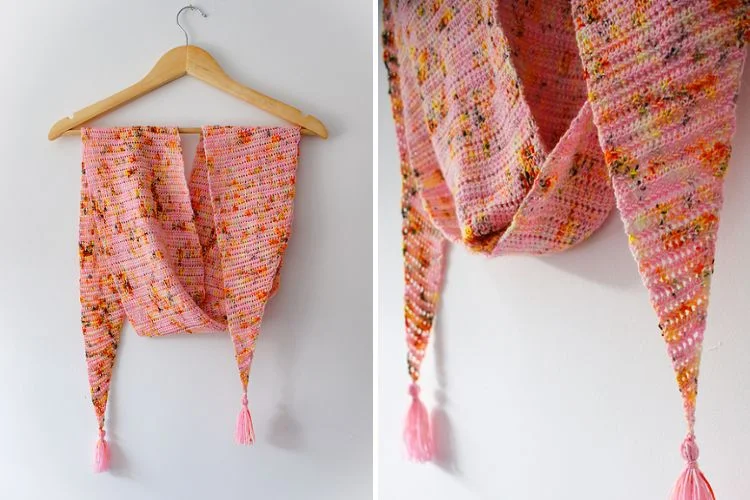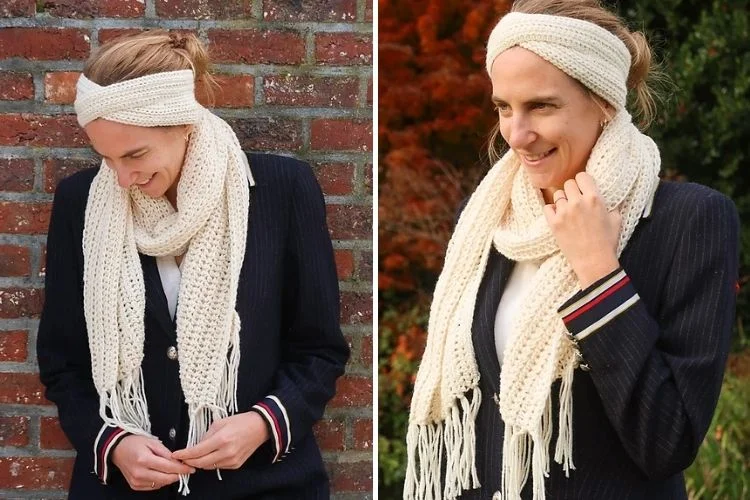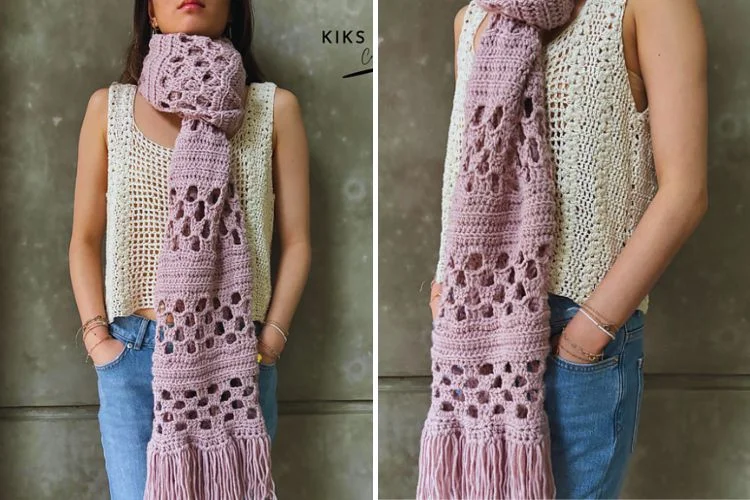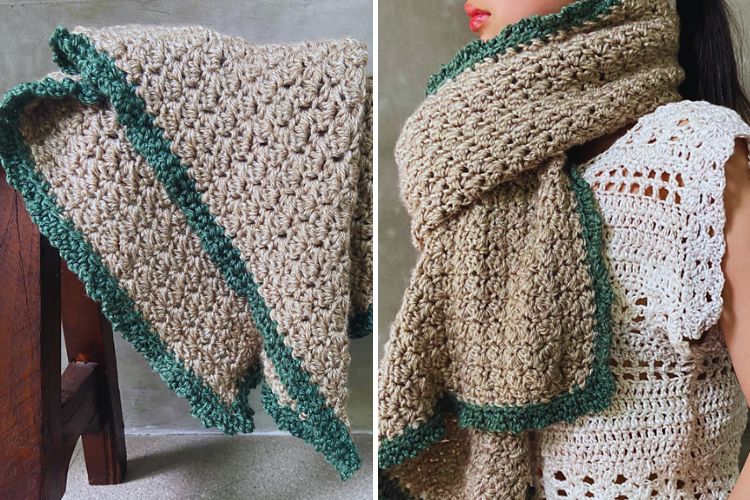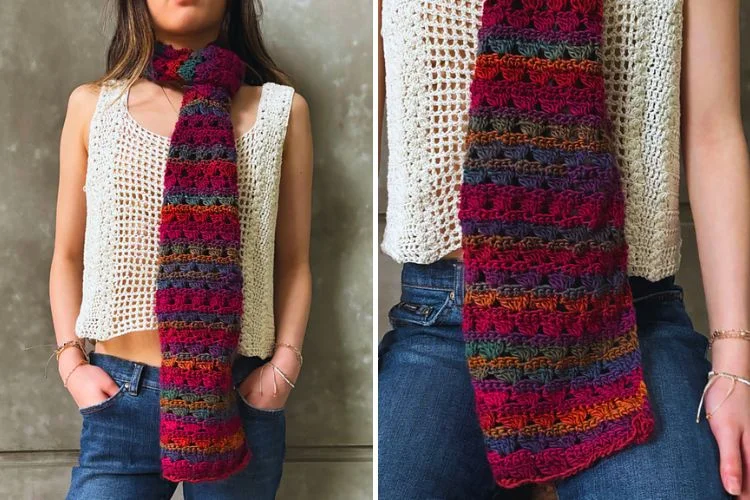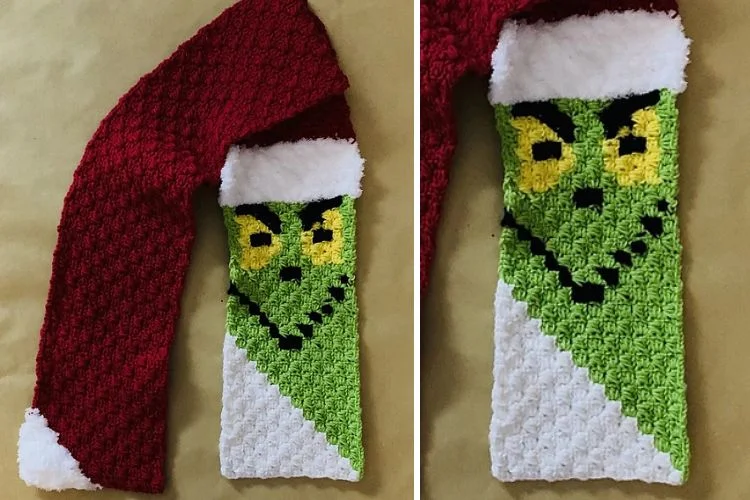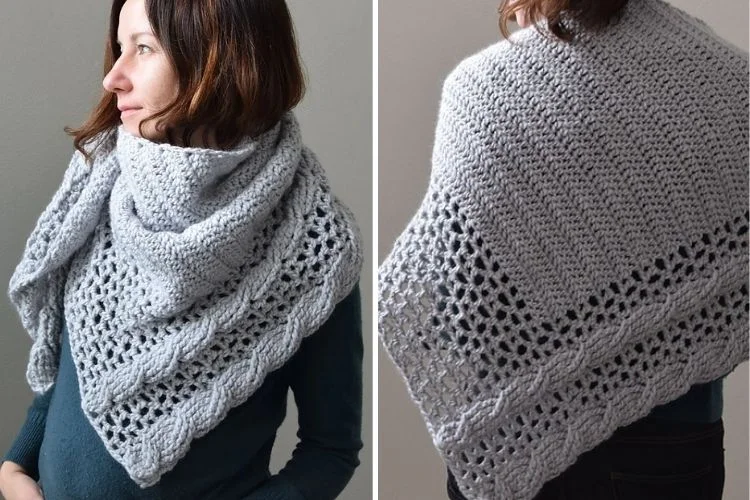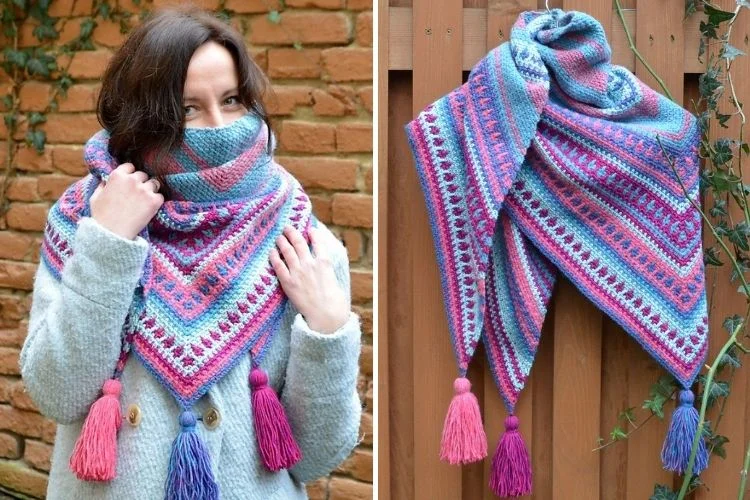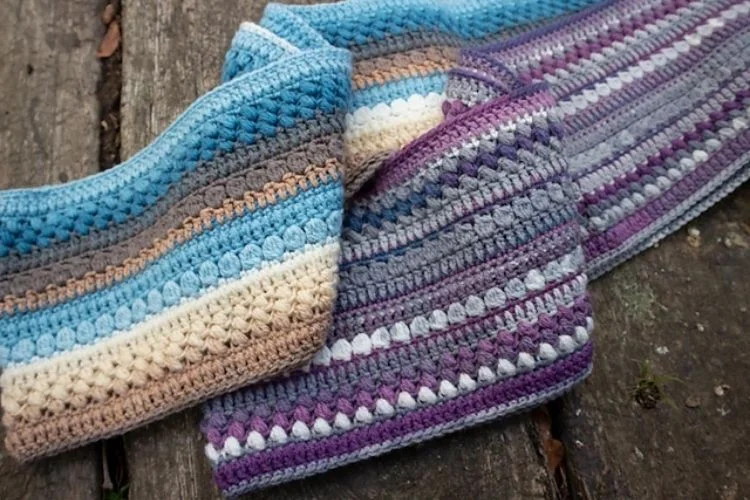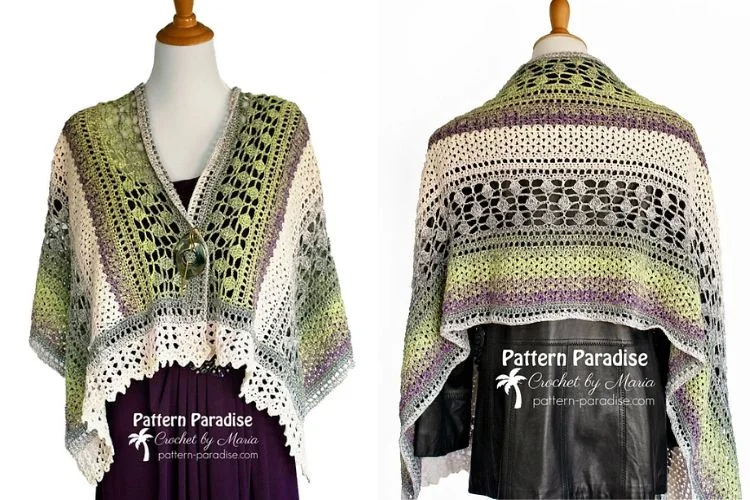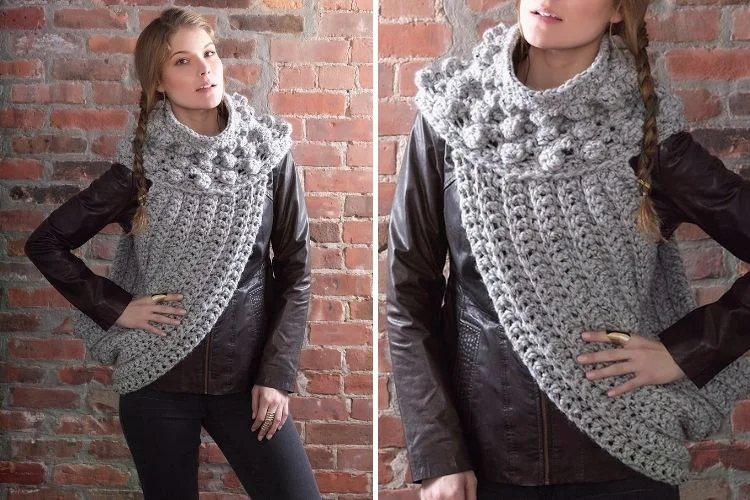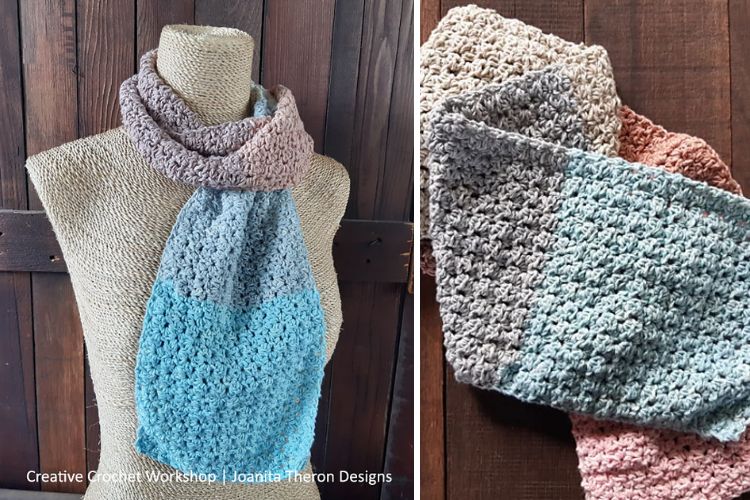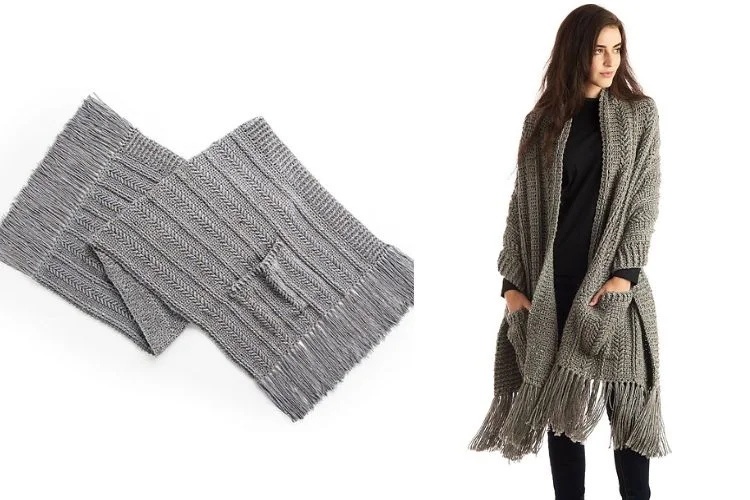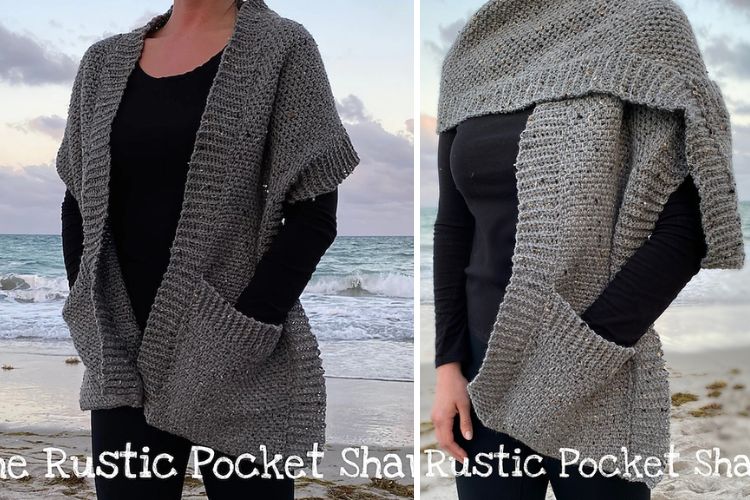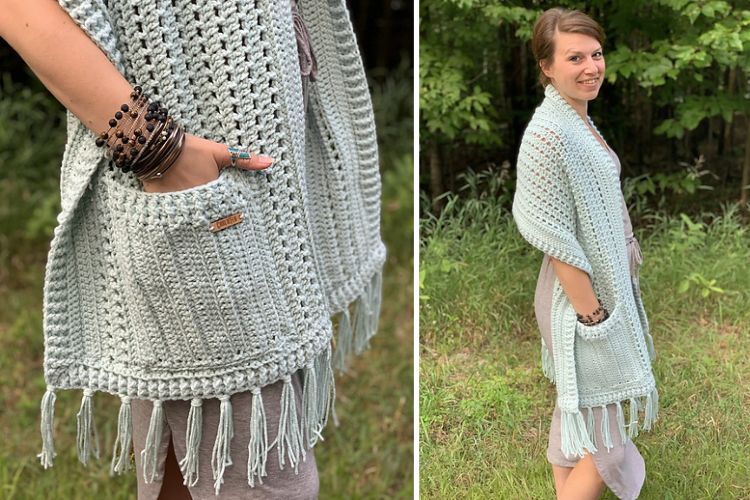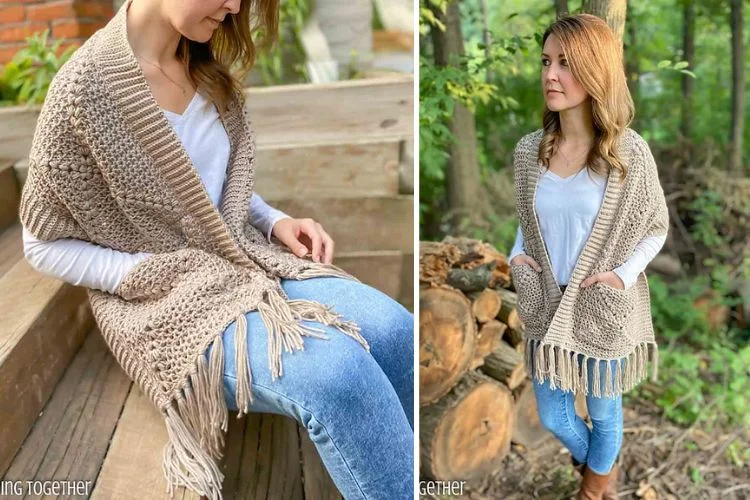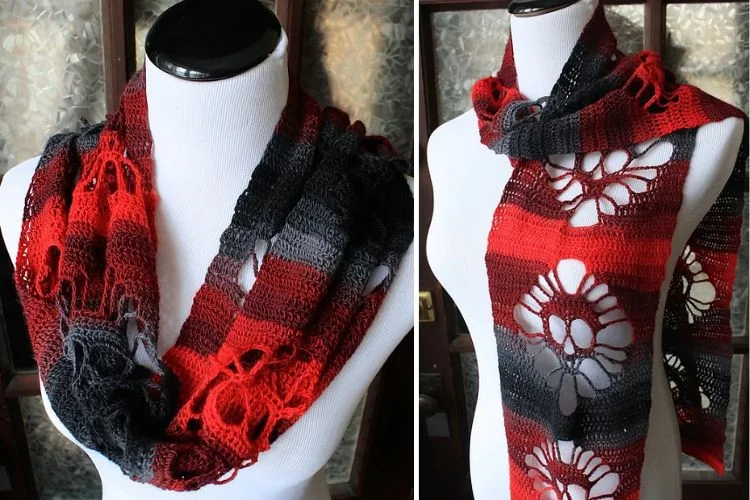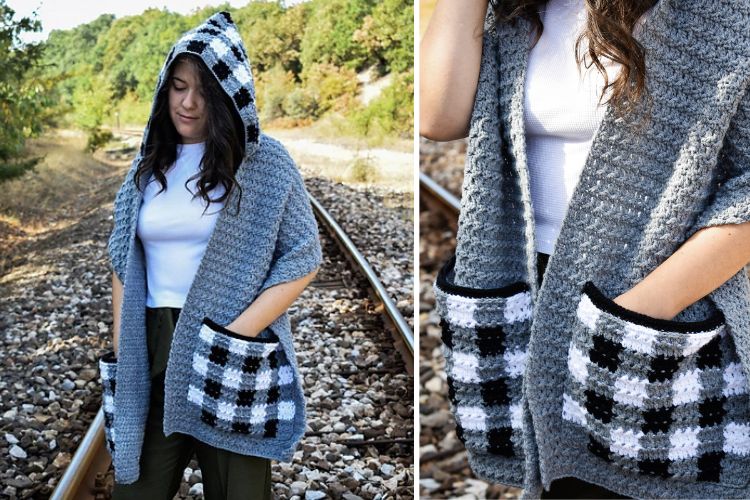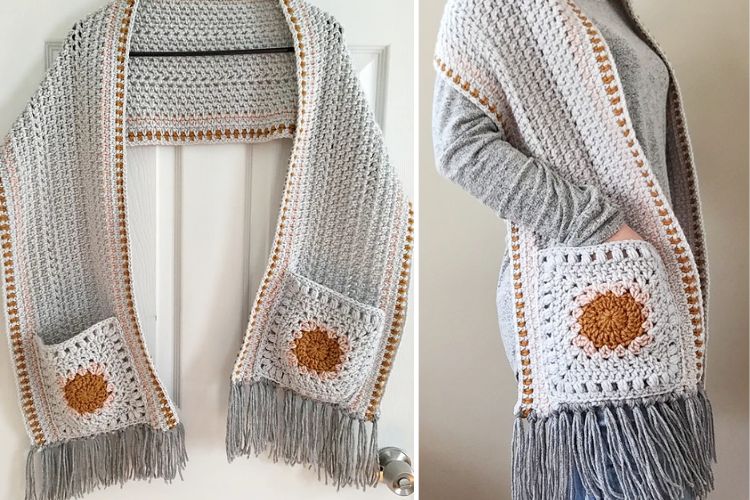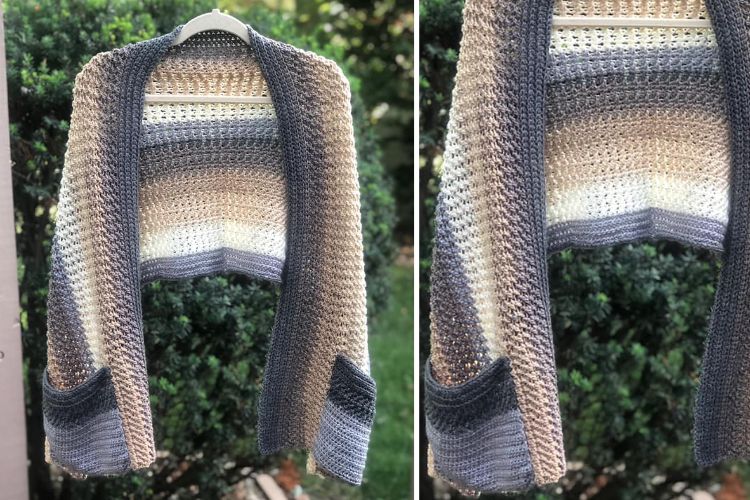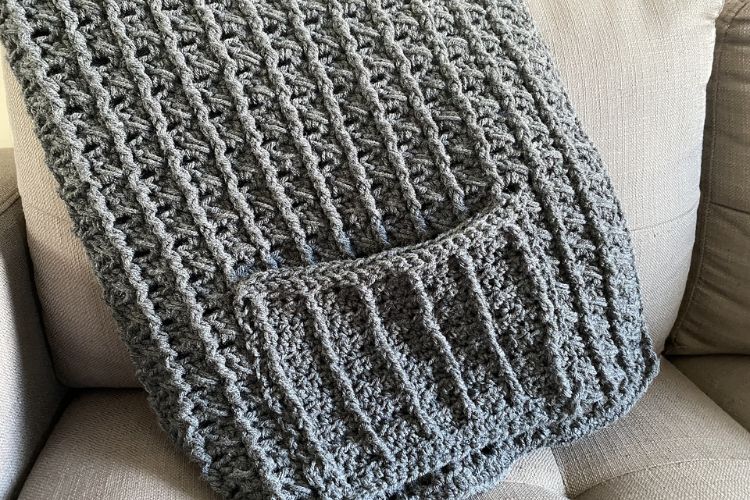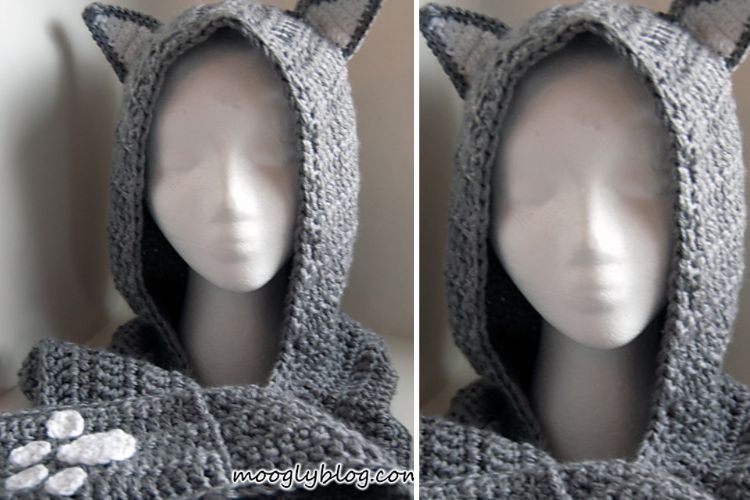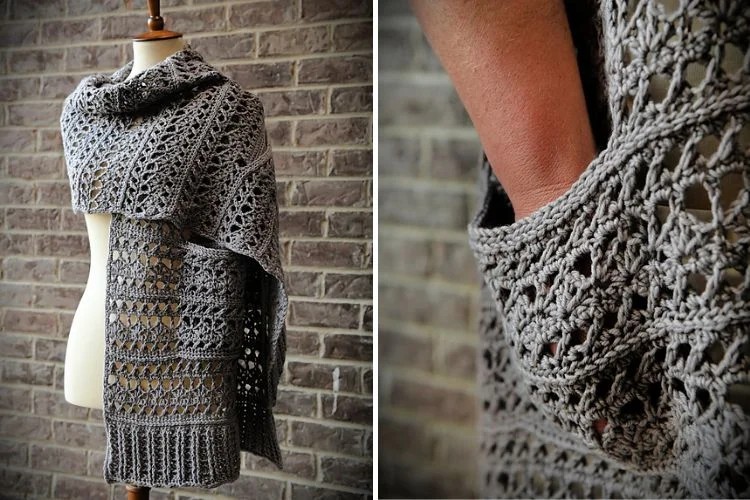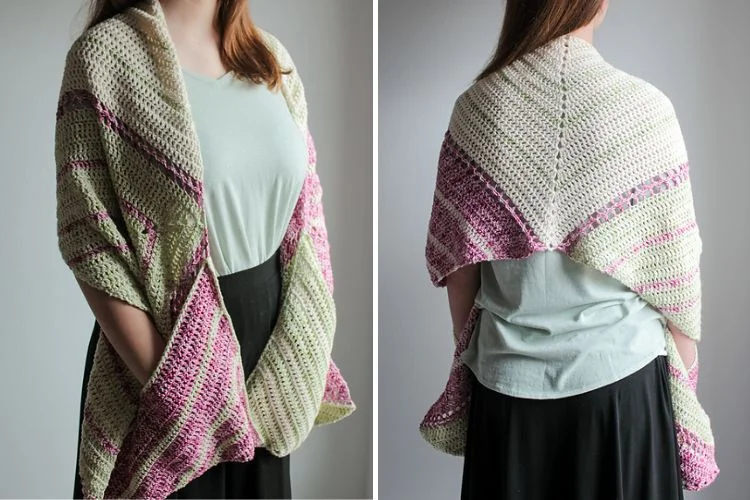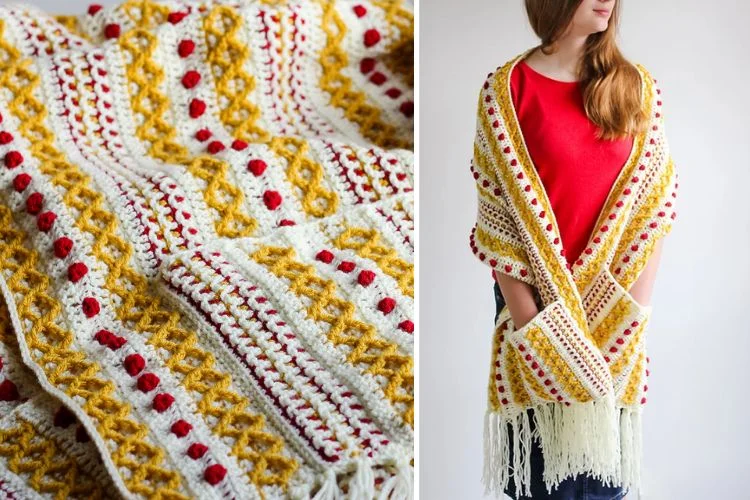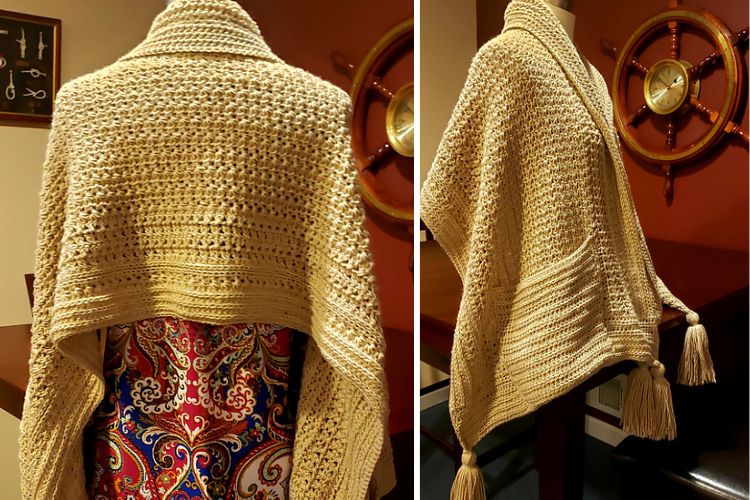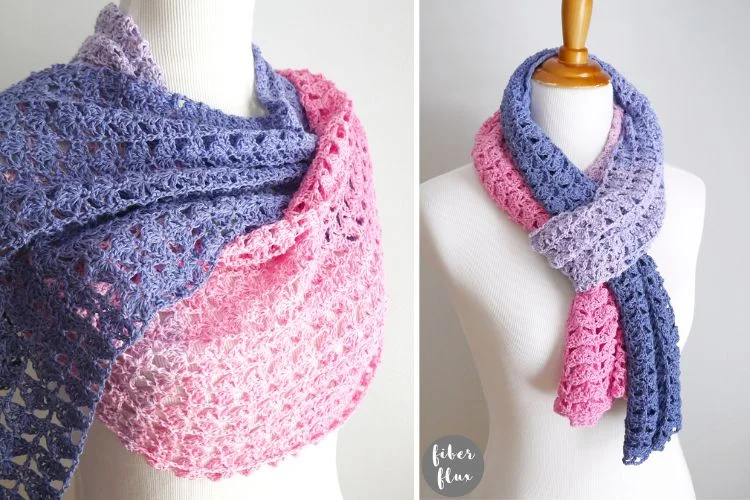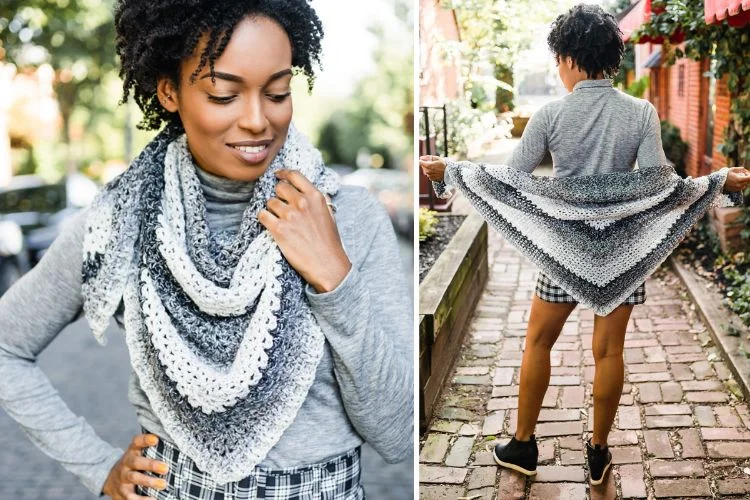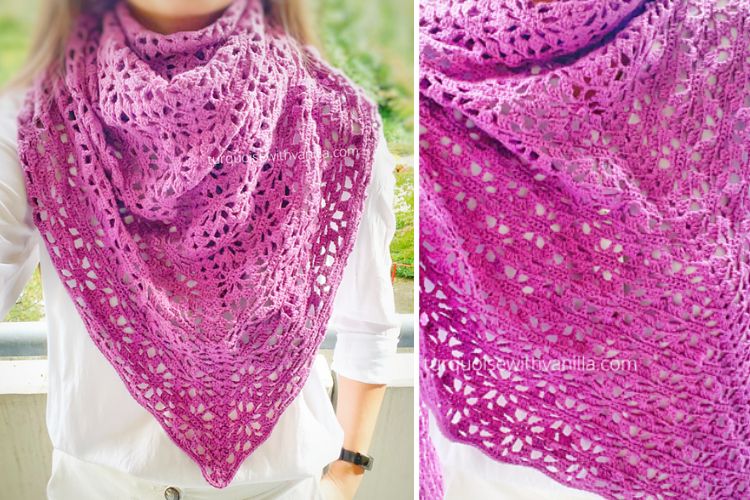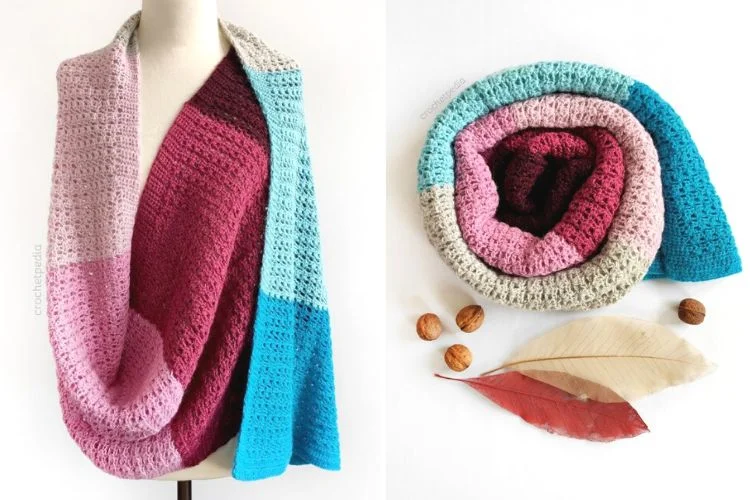Types of Free Crochet Scarf and Wrap Patterns
Let’s look at the most popular scarf and wrap types.
Chunky Scarves and Wraps
Using bulky yarn and a big-size crochet hook is a foolproof way to create an accessory quickly! This type of scarf will be super warm and cozy – simply perfect for colder months. Pair it with handmade mittens and a pom-pom hat, and you’ll be ready to conquer the winter weather.
Colorwork Scarves and Wraps
Explore all the possibilities colorwork techniques have to offer. Stripes, blocks, spikes, and more – what a fun way to play with color, right? If you’re into creating unique pieces, try techniques like tapestry crochet, mosaic crochet, or intarsia.
Infinity Scarf Patterns
Don’t like the scarf ends dangling on the sides? No problem, just go for infinity scarves. These free crochet scarf patterns will show you step-by-step how to create a continuous loop that you can wrap around your neck. Beginners, this project is for you, as there are no advanced stitches necessary.
Delicate Lacy Wrap Patterns
If you’re looking for a challenge, explore patterns for lightweight lacy shawls and wraps. These projects often feature openwork and use finer yarns. The effect is super elegant – perfect for special occasions, such as weddings, parties, or formal events.
Choosing the Right Yarn for Scarves and Wraps
The choice of yarn can greatly impact the look, feel, and drape of your scarf or wrap. A chunky scarf will have a rustic look, dramatically different than a delicate shawl. You should consider what effect you want to achieve with your project and plan accordingly. Wool, wool blends or acrylic in heavier versions will be great for winter and easy to care for. Lightweight and more sophisticated wool yarns, silks, bamboo, or cotton, will work great for summer wraps.
How to Adjust the Size of a Scarf
Most basic crochet scarf patterns are very straightforward and easy to adjust. To do that, you should add or remove some rows or stitches. To make a scarf longer, add some rows. To make it wider, modify the amount of stitches in a row so that you have more than the pattern calls for. Conversely, if you want to make it smaller or narrower, reduce these numbers.



